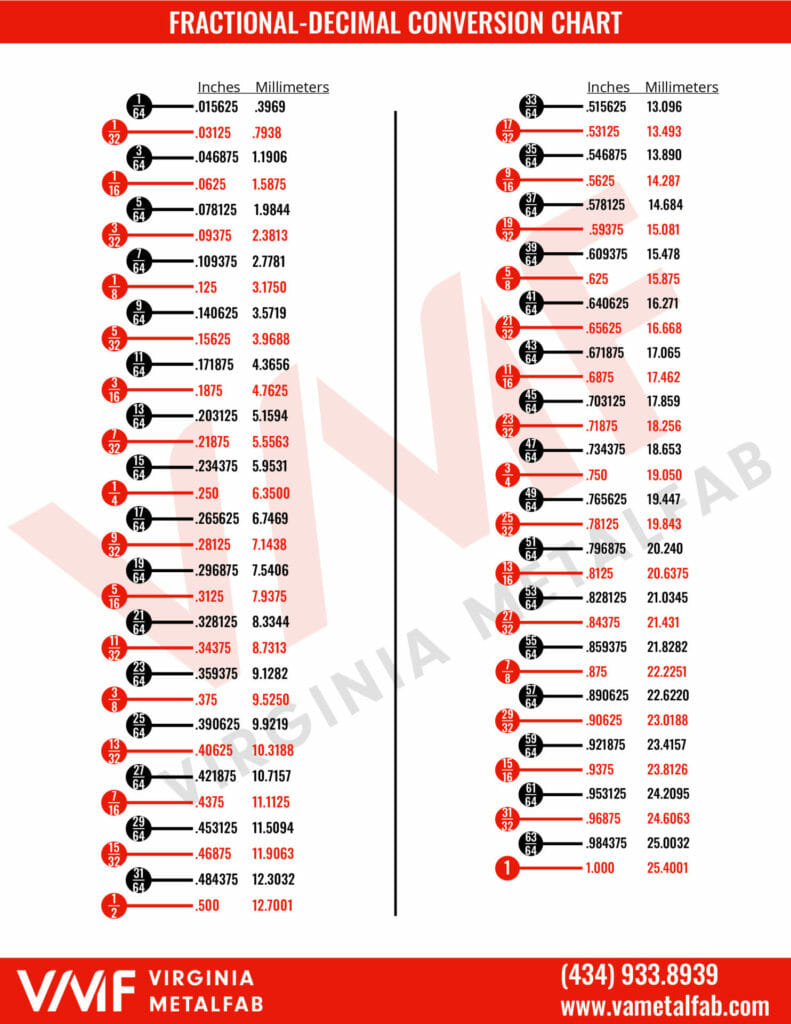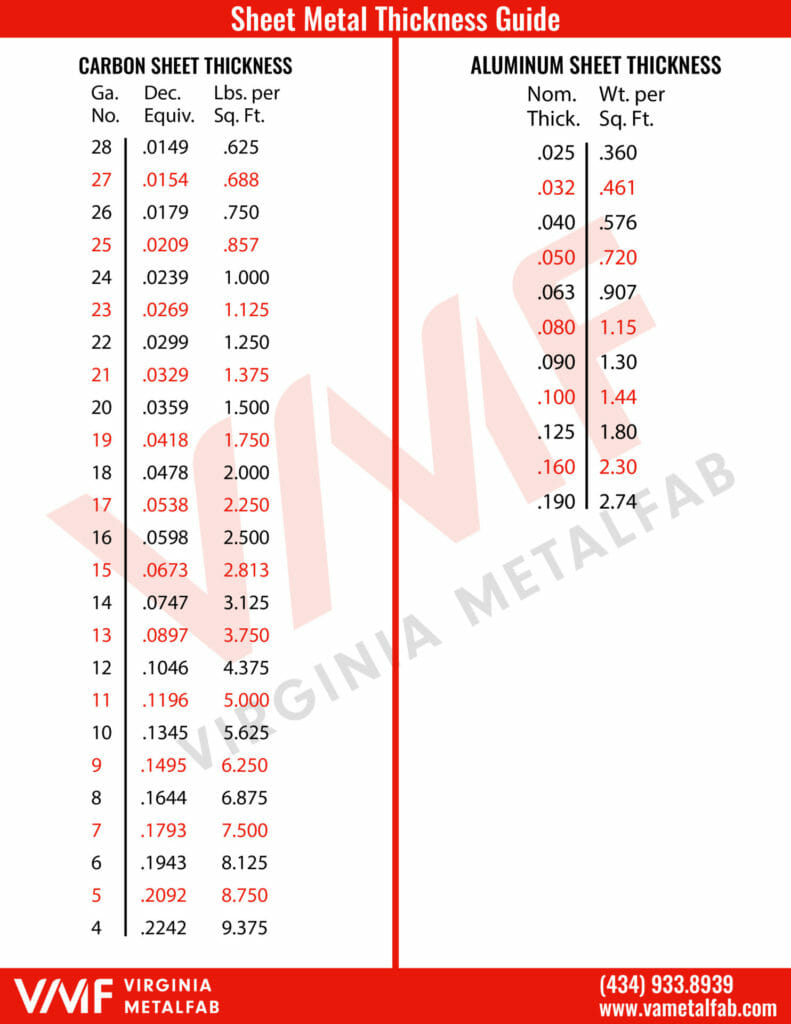Fractional-Decimal Conversion Chart
Here is a chart of some commonly used fractions and their decimal equivalents in inches and millimeters. When designing a part or reading a drawing, a chart like this is nice for a double check to make sure you are using the right decimal. Drawings can often have fractions instead of decimals and when you are entering information into elite machines like press brakes, it doesn’t know fractions. Sometimes customer’s parts and drawings will be in millimeters, in the USA we use the imperial system for measurements, so charts like this are helpful to interpret drawings and parts.
Sheet Metal Thickness Guide
In most of the world, sheet metal thickness is consistently specified in millimeters. In the U.S., the thickness of sheet metal is commonly specified by a traditional, non-linear measure known as its gauge. The larger the gauge number, the thinner the metal. Commonly used steel sheet metal ranges from 30 gauge to about 7 gauge. Thicknesses can vary significantly; extremely thin sheets are considered foil or leaf, and pieces thicker than 6 mm (0.25 in) are considered plate steel or “structural steel”. Keeping a gauge conversion chart nearby is an easy way to determine the actual thickness of a sheet of metal in inches. For example, 14 gauge steel is .0747 inches thick. The gauge number 14 holds no relevance to the actual measurements.
Note: There is no official gauge standard for aluminum.

